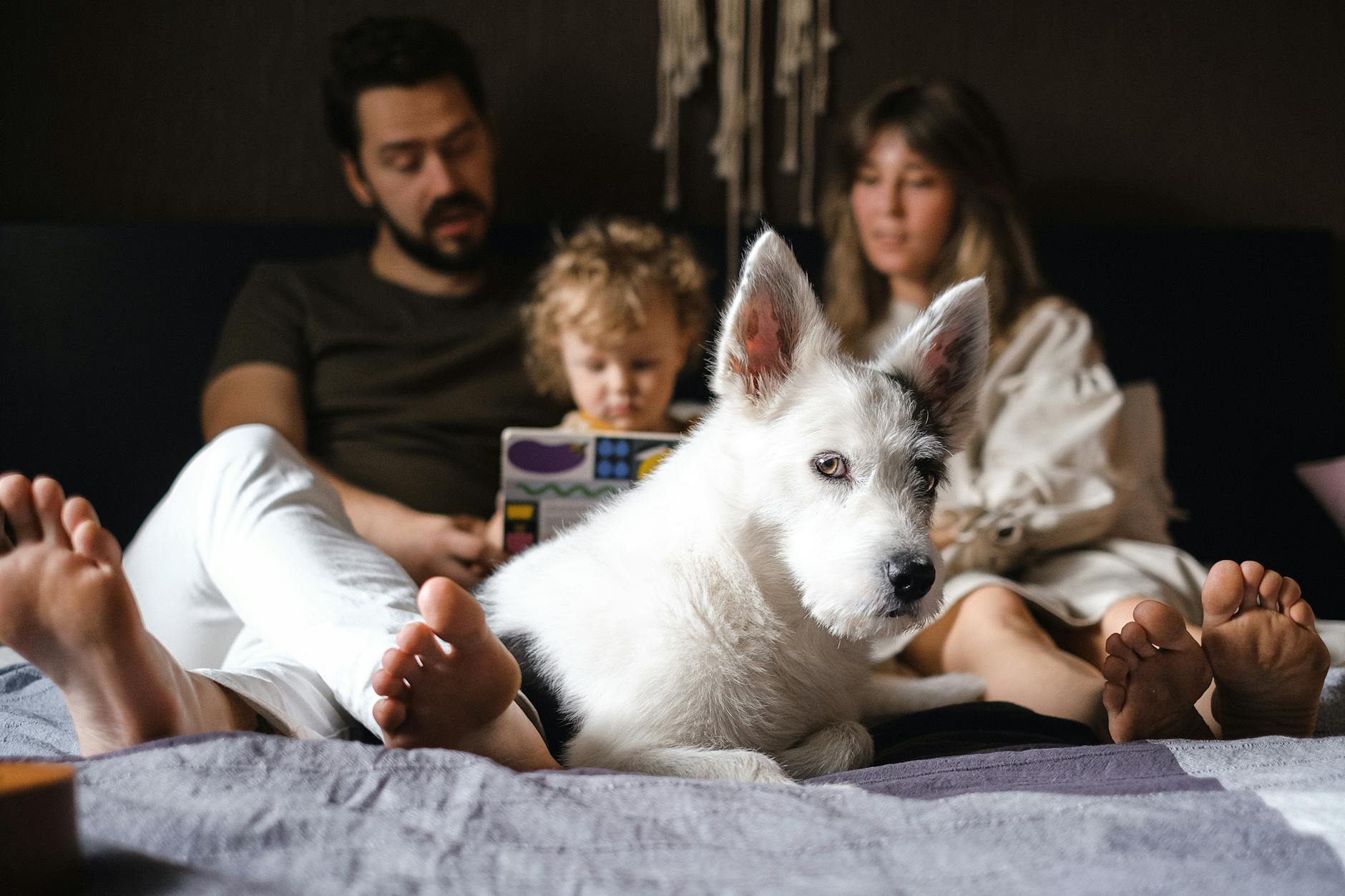Are You Exploring Humane Dog Training Methods in Australia?

Exploring Humane Training
As a dog enthusiast living in Brisbane, I’m acutely aware of the joys and challenges pet ownership brings. Our vibrant community, filled with pet-friendly cafes in West End and scenic trails at Mount Coot-tha, is a constant reminder of how vital humane training methods are for our furry companions. Among the remarkable tools that resonate with modern technology are the electric dog fence and the anti bark collar.
The electric dog fence is an innovative solution for ensuring a safe space for our pets without traditional physical barriers. It sets gentle boundaries, keeping our spirited friends safely within their designated area, allowing you to sip your coffee worry-free at those lovely pet-friendly cafes. This tool’s creativity lies in its integration within the landscape, offering a transparent and effective control method.
Similarly, the anti-bark collar is another intelligent solution for managing excessive barking without causing harm. With technology evolving rapidly, features such as the noise-triggered citronella dog collar provide thoughtful alternatives to traditional collars. They release a harmless spray when barking is detected. This approach is especially beneficial when you're trying to enjoy a peaceful afternoon stroll at the Mount Coot-tha trails without the constant worry of disturbing other walkers or wildlife.
These solutions not only reflect creativity but also emphasise our responsibility to ensure the ethical treatment of pets. There’s a comfort in knowing that even as technology progresses, there are innovative pathways to solve everyday problems in humane ways that align with our love and care for our pets.
Innovative Training Tools
High-Tech Solutions in Training
As a fellow dog enthusiast, I’m thrilled to chat about the latest training tools that merge tech with pet care. One standout is the invisible dog fence, an impressive innovation for pet owners looking to create safe outdoor spaces. These fences use a boundary system to keep our furry pals secure without the need for a physical barrier. It's an inventive solution that can ensure your dog stays within the designated area, with the added benefit of setting it up around any landscape you fancy—a perfect fit if you enjoy scenic trails at Mount Coot-tha.
DIY Training Tech Projects
If you're someone who enjoys rolling up your sleeves and diving into some DIY, similar to what I’ve often found myself doing, then creating your own hidden dog fence could be an exciting project. By using readily available tech components, you can configure a system tailored to your exact requirements. This not only harnesses your creative problem-solving skills but also gives you control over the design and functionality, ensuring it meets both safety and ethical standards.
Electrical Engineering Applications
For those of us who dabble in electrical engineering, there’s room for innovation in the realm of dog electric collars. While traditionally controversial, incorporating advanced technology allows us to develop humane alternatives that focus on gentle prompts. This encourages positive behaviour without resorting to harsh methods. As someone who works in tech and loves tackling challenges head-on, crafting a device that balances effectiveness with ethics can be both fulfilling and practical.
Techniques for Prioritizing Dog Welfare
Positive Reinforcement Methods
Incorporating positive reinforcement into dog training is like sipping a steaming hot coffee at a dog-friendly cafe in West End—comforting and bonding. Instead of focusing solely on correcting behaviour, I reward my dog for good actions, making them more likely to repeat those behaviours. Treats, praise, or affection act as motivations, creating a bridge of communication between me and my furry buddy. Over time, this approach proves more effective than relying on tools like an anti barking collar.
Avoiding Negative Impacts
When I consider using an electric collars dogs, I remind myself of the potential negatives that such tech might bring. It's crucial to ensure that any device I choose is humane and minimally invasive. My aim is not to induce fear but to foster understanding and empathy. Through balanced training sessions, I can resonate with the same safety and assurance my dog feels on the scenic trails at Mount Coot-tha. Thoughtful use of technology stops the training from turning sour.
Integrating Play and Learning
Transforming learning into a playful experience helps keep my dog engaged and stimulated. Combining elements of fun and instruction, like games that challenge their intellect or dexterity, not only keep them entertained but also promote better behaviour. It's about harnessing creativity in problem-solving techniques, akin to the imaginative energy found in pet accessory shops in Fortitude Valley. Both mental and physical exercises contribute to a well-rounded training regimen.
Challenges in Humane Training
Balancing Technology and Ethics
I've found that the intersection of technology and ethics in dog training tools is a hot topic among my mates at the dog-friendly cafes in West End. A common tool sparking debate is dog collars that shock. These devices employ electrical impulses to train dogs, but they often raise eyebrows due to ethical concerns.
For those of us who lean towards creative problem-solving, the key is balance. Using tech doesn't mean abandoning humane values. For instance, some pet owners might explore alternatives like wearable tech to track behaviour rather than relying solely on shock collars for a dog. This can ensure that our pets not only learn effectively but safely too.
Addressing Common Misunderstandings
There’s a wealth of misinformation floating around Fortitude Valley's pet accessory shops about electronic training tools. It's crucial to discern facts from myths. Many folks misunderstand how these tools work, thinking they're inhumane across the board. However, when used correctly and sparingly, with a focus on positive reinforcement, they can form part of a comprehensive training programme—not the entirety.
Overcoming Resistance to Change
Transitioning to humane training methods can feel daunting, especially when traditional tools seem more immediate. However, sharing stories of positive experiences with fellow dog enthusiasts on Brisbane's scenic trails at Mount Coot-tha can shift perspectives. By demonstrating the value of modern approaches, such as utilising data from training apps to tailor routines, we inspire more pet owners to embrace change. This collective shift will ensure a happier, healthier relationship with our furry companions.
Customising Training Methods for Your Pooch
Understanding your dog's unique personality is just as critical as picking out a new leash at a pet accessory shop in Fortitude Valley. Our furry mates respond differently to training methods, so it's essential to tailor your approach to suit their specific quirks. Consider how electric and anti-barking dog collars might serve as tools, not solutions, in your creative problem-solving strategy. Keep it playful yet purposeful; after all, every curl of the tail or twitch of the ears speaks volumes.
Lifelong Learning for Us, The Dog Owners
Let's face it, owning a dog is like an endless crash course in understanding body language and decoding barks. Stay curious to discover new, humane techniques that align with your ethics. Whether you're browsing for tips at a dog-friendly cafe in West End or scrolling through digital resources during a lunch break, continuous education is indispensable. While some folks might raise an eyebrow at unconventional tools, share your success stories to spread motivation and understanding among fellow pet enthusiasts.
Tapping into Techie Communities
Engaging with tech-savvy communities is akin to a walk along Mount Coot-tha with a mate—it's invigorating and opens up new possibilities. Dive into forums or social groups to discover how technology can aid in your training journey while keeping your dog's welfare a priority. Remember, the aim is not to replace our loving touch but to complement it, ensuring our pups wag their tails with joy and not out of perplexity.


